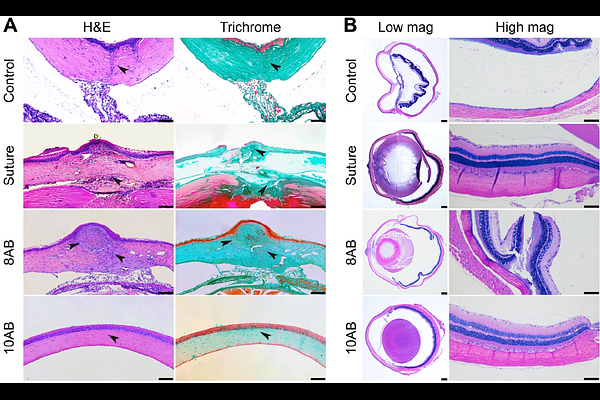Genetically Programmable Adhesive Protein Hydrogels for Sealing Perforating Corneal Trauma

Genetically Programmable Adhesive Protein Hydrogels for Sealing Perforating Corneal Trauma
Xu, L.; Yi, Q.; Hu, P.; Yu, Y.; Huang, Y.; Ye, Y.; Chen, H.; Fok, H. K. F.; Zhao, P.; Wu, X.; Kou, S.; Zhou, Z.; Sun, F.; Long, D.
AbstractThe cornea, situated at the forefront of the eyeball, is often subjected to varying degrees of mechanical laceration injuries due to various traumatic incidents. Timely and precise suturing of corneal wounds to prevent the leakage of intraocular contents is a significant clinical challenge. Although some studies have attempted to use hydrogels to accurately cover corneal injuries, most of these hydrogels are only suitable for adhering to focal stromal defects that do not involve the corneal stroma. Here, a fully protein-based hydrogel, based on SpyTag-SpyCatcher chemistry, was investigated for repairing corneal perforating injury models in rats and rabbits. The hydrogel formation relies on covalent bonding between SpyTag (A) and SpyCatcher (B) under physiologically mild conditions, eliminating requirements for organic solvents, elevated temperatures, or photoactivation Notably, integration of recombinant mussel foot protein 3 (Mfp3) endowed the hydrogels with exceptional water-resistant adhesiveness, while maintaining their original mechanical properties and biocompatibility. This study demonstrates the great potential of Mfp hydrogels in the timely and precise repair of corneal perforating injuries in complex physicochemical environments.